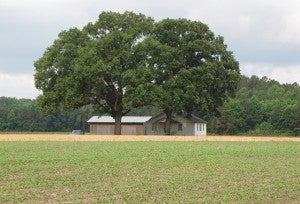 Economic inequality has become one of the dominant political narratives of the day. It occupies discussions on both sides of the aisle, and is shaping elections from city halls to the White House. There’s a good reason for this: the continuing trends of flattening incomes, concentrated wealth, and deepening poverty are historic.
Economic inequality has become one of the dominant political narratives of the day. It occupies discussions on both sides of the aisle, and is shaping elections from city halls to the White House. There’s a good reason for this: the continuing trends of flattening incomes, concentrated wealth, and deepening poverty are historic.
One place this reality is really hitting home for millions of Americans is on their monthly energy bill. For nearly one in three American families, paying a monthly energy bill is a challenge.
The energy burden, as the Department of Energy defines it, is the ratio of energy costs (which includes heating, cooling, appliances, and lighting from electricity, gas, and fuel sources) to household income. Nearly 40 percent of low-income households use electricity to heat their homes (the majority in the South and West), and are suffering a more severe energy burden because of factors like wage stagnation and the quality of housing at lower economic levels. In 2014, researchers looking at the “energy affordability gap” for low income households (the difference between actual energy bills and what is considered affordable) tabulated it at almost $45 billion nationally. That is an increase of 16 percent from 2011, with nearly 60 percent of the growth accounted for by states in the mid-South, South, and east of the Mississippi. For any of those families, even a 10 percent growth in electricity costs can be destabilizing. Monthly electric bills become another factor forcing households to choose between groceries, childcare, and medical bills.
To make inroads in closing the energy affordability gap and reducing energy burdens for the most vulnerable, Environmental Defense Fund believes we need a combination of greater and scalable clean energy investment in low- and moderate-income communities, and a focus on empowering the many faces that are energy-burdened. The multi-billion dollar affordability gap certainly poses a variety of financial risks, but it’s also rife with opportunity. Read More »
 No one ignores an opportunity to save billions of dollars. Numbers of that size are enough to make an audience take notice, even in a business like commercial real estate, where deals in the hundreds of millions and billions are commonplace.
No one ignores an opportunity to save billions of dollars. Numbers of that size are enough to make an audience take notice, even in a business like commercial real estate, where deals in the hundreds of millions and billions are commonplace.









 A recent decision by New Jersey utility regulators to standardize energy efficiency procedures for commercial buildings could have a major impact – not just on the Garden State – but on energy markets nationwide.
A recent decision by New Jersey utility regulators to standardize energy efficiency procedures for commercial buildings could have a major impact – not just on the Garden State – but on energy markets nationwide. Economic inequality has become one of the dominant political narratives of the day. It occupies discussions on both sides of the aisle, and is shaping elections from city halls to the White House. There’s a good reason for this: the continuing trends of
Economic inequality has become one of the dominant political narratives of the day. It occupies discussions on both sides of the aisle, and is shaping elections from city halls to the White House. There’s a good reason for this: the continuing trends of  Most Americans think their electricity comes from large power companies. In North Carolina, my home state, that might mean Duke Energy or Dominion Resources. But did you know that 42 million people in 47 states get their electricity from electric cooperatives? These member-owned electric utilities were first formed back in the 1930s to provide electricity to people living in rural areas and small towns.
Most Americans think their electricity comes from large power companies. In North Carolina, my home state, that might mean Duke Energy or Dominion Resources. But did you know that 42 million people in 47 states get their electricity from electric cooperatives? These member-owned electric utilities were first formed back in the 1930s to provide electricity to people living in rural areas and small towns. Growing up in eastern North Carolina was a great experience. Wayne County was my home, and I spent many weekends fishing for bass and hunting quail with my father on the family farm in nearby Bladen County. The time outdoors was great for character building, and visiting with relatives, friends, and elders in the community was equally important for understanding my heritage and the challenges my parents overcame.
Growing up in eastern North Carolina was a great experience. Wayne County was my home, and I spent many weekends fishing for bass and hunting quail with my father on the family farm in nearby Bladen County. The time outdoors was great for character building, and visiting with relatives, friends, and elders in the community was equally important for understanding my heritage and the challenges my parents overcame. California’s big three utilities –
California’s big three utilities –